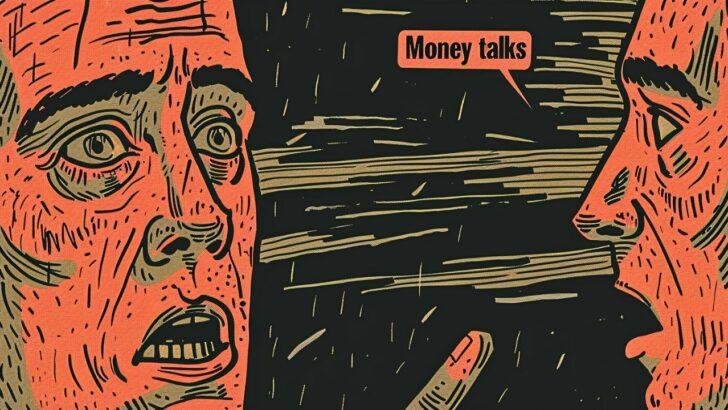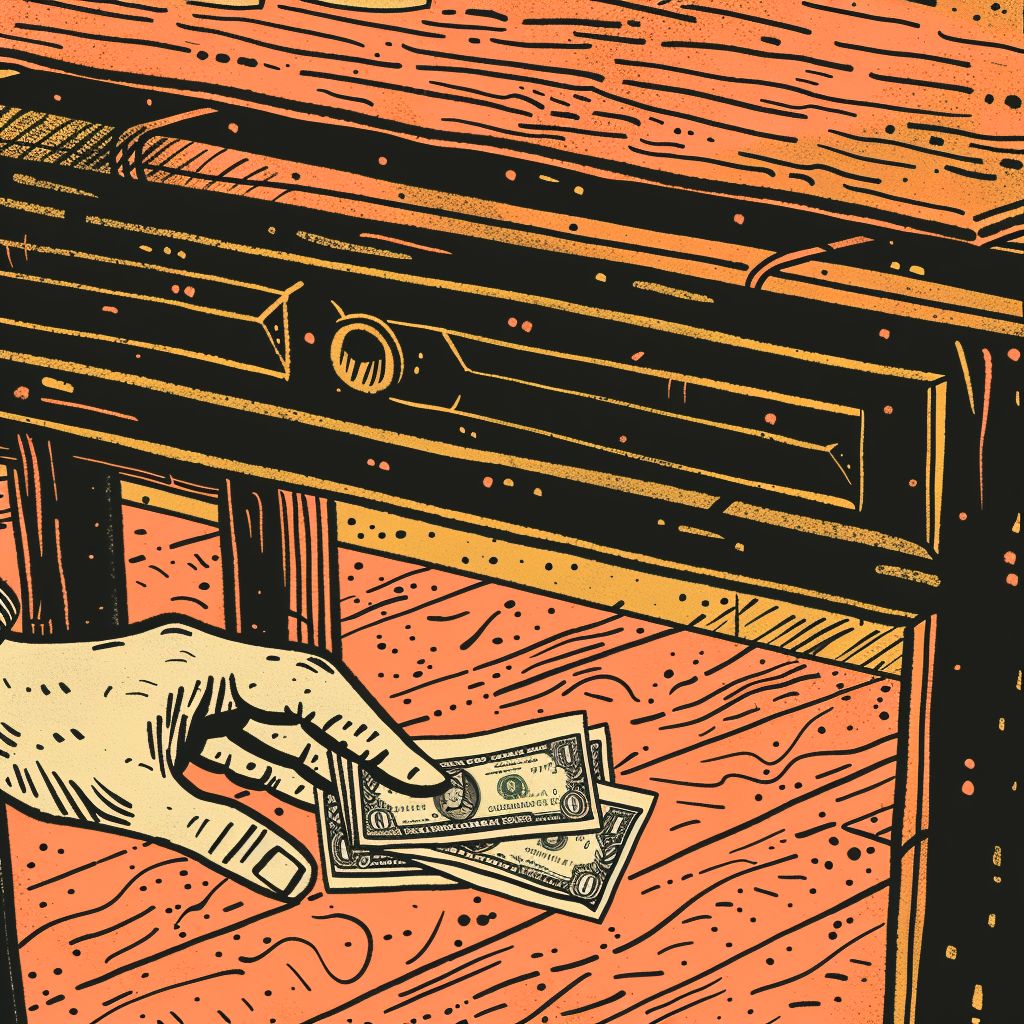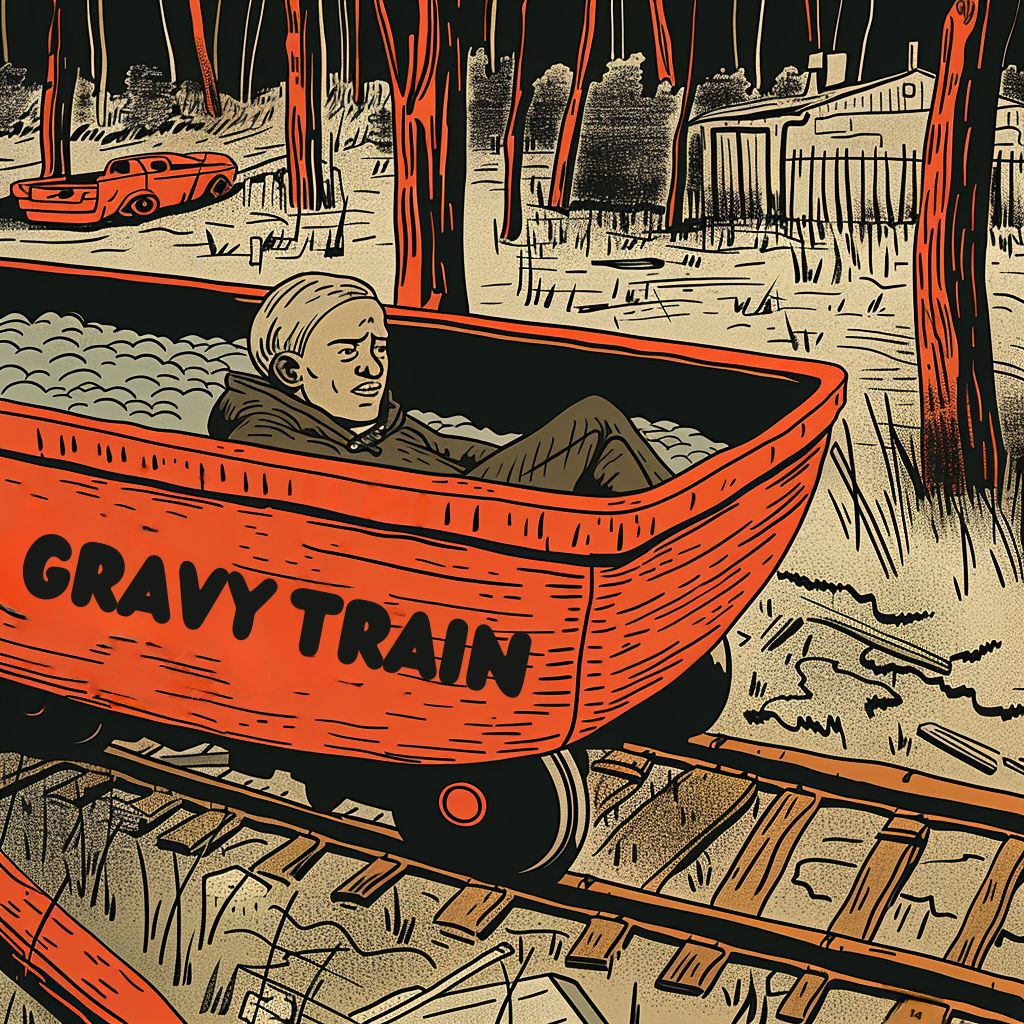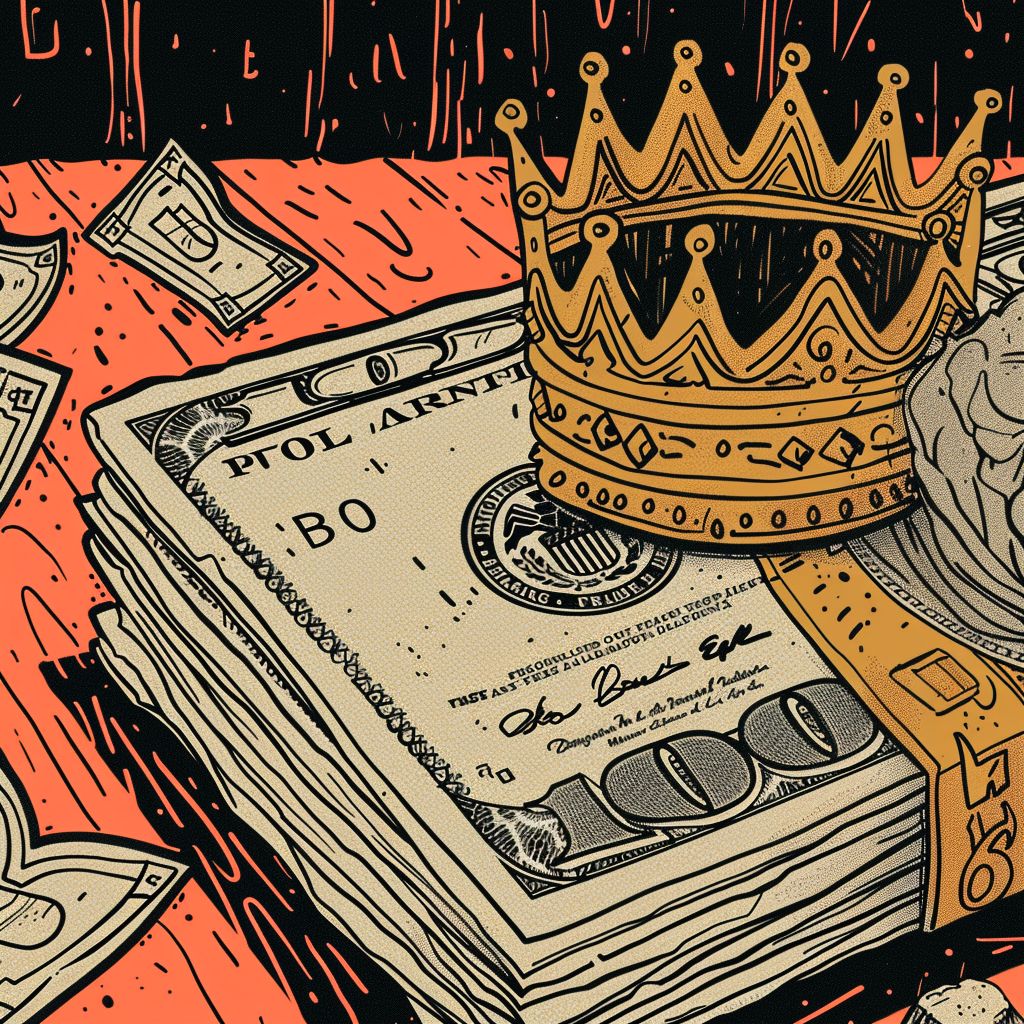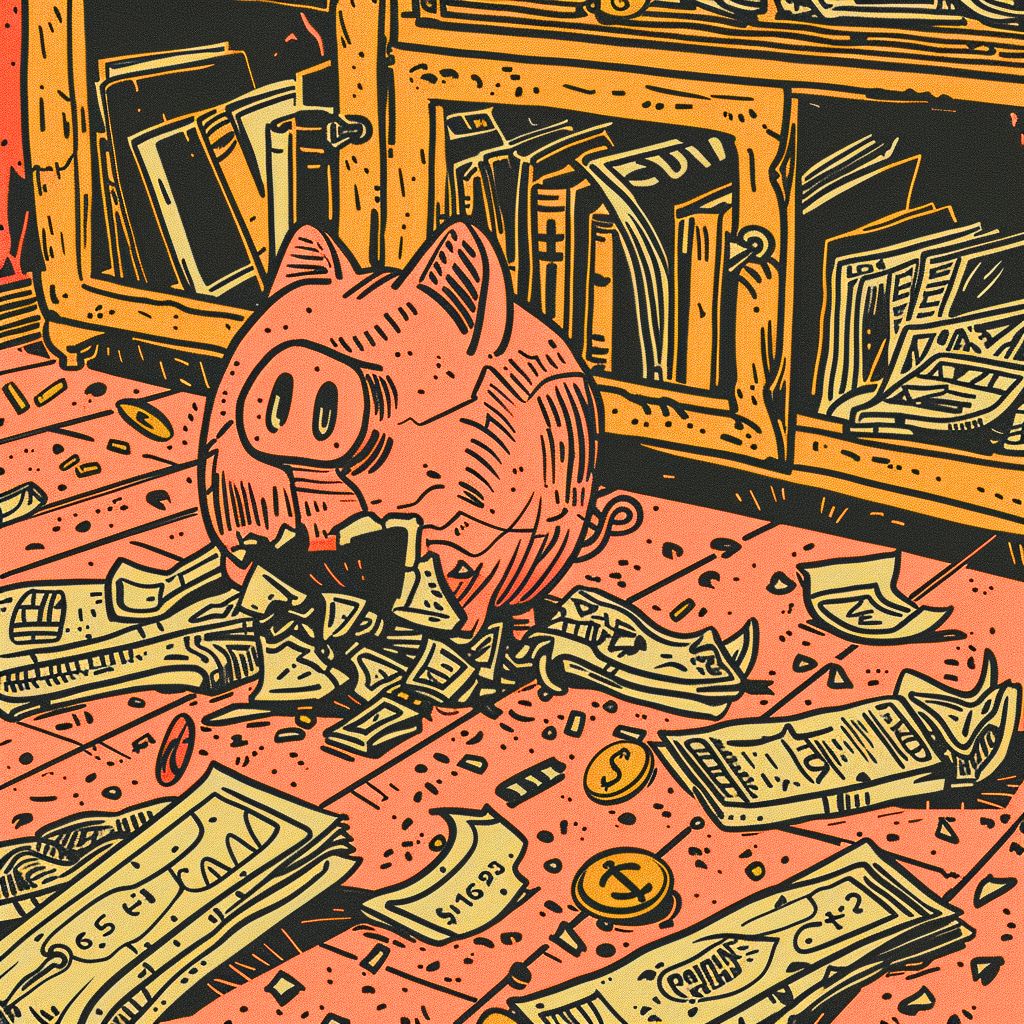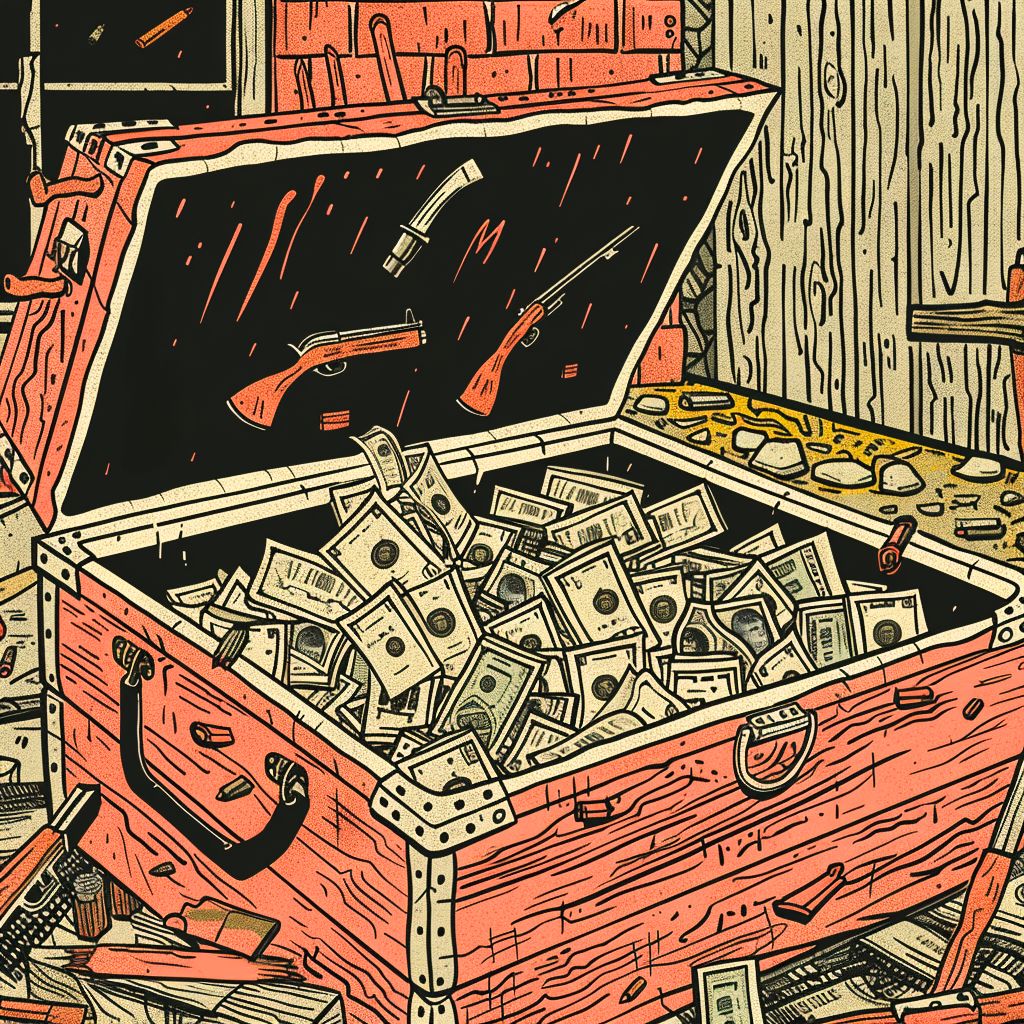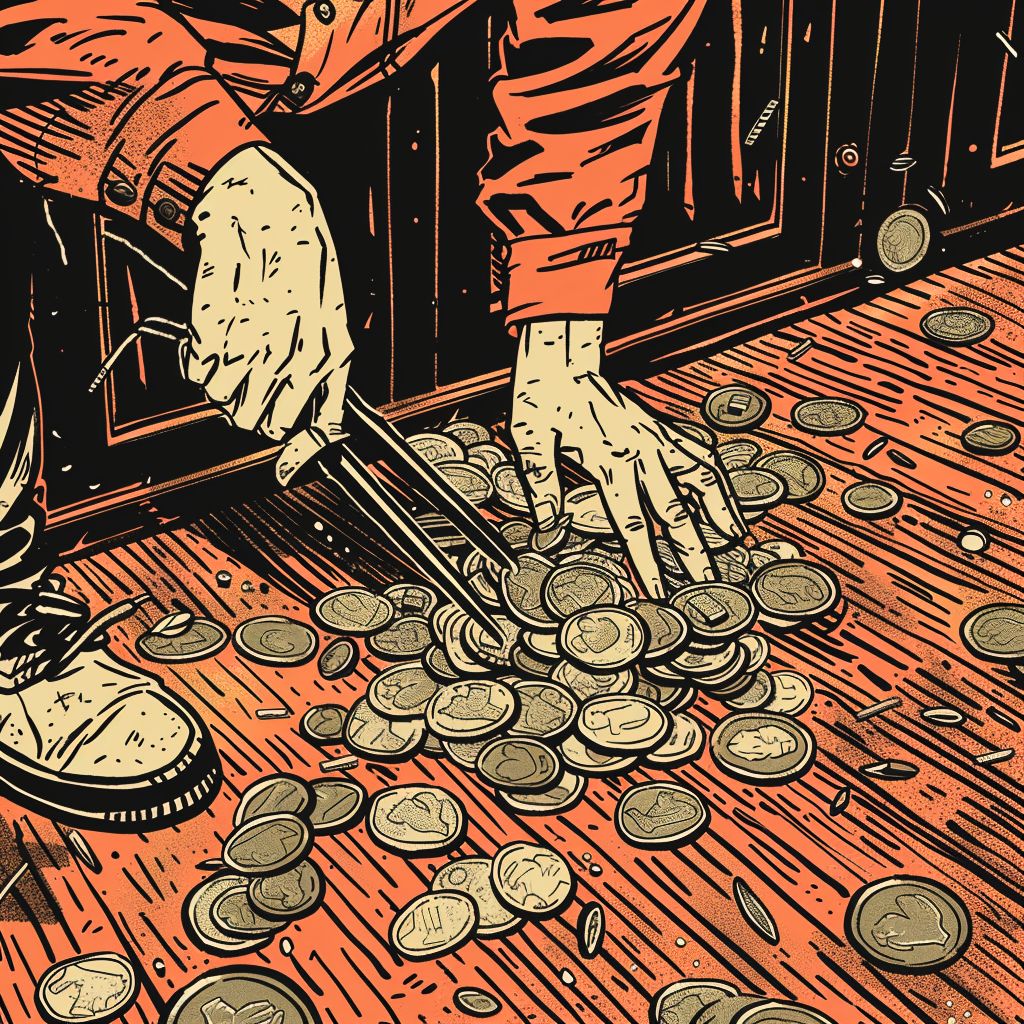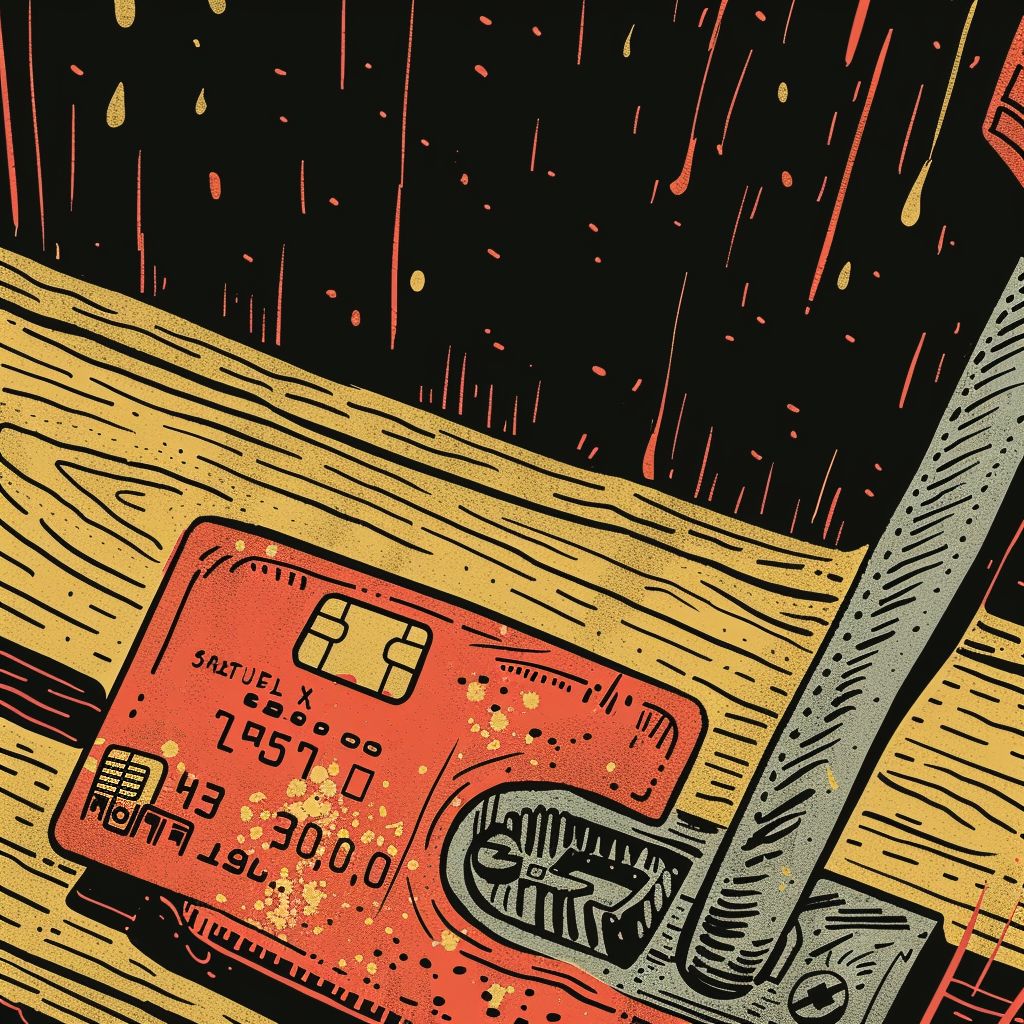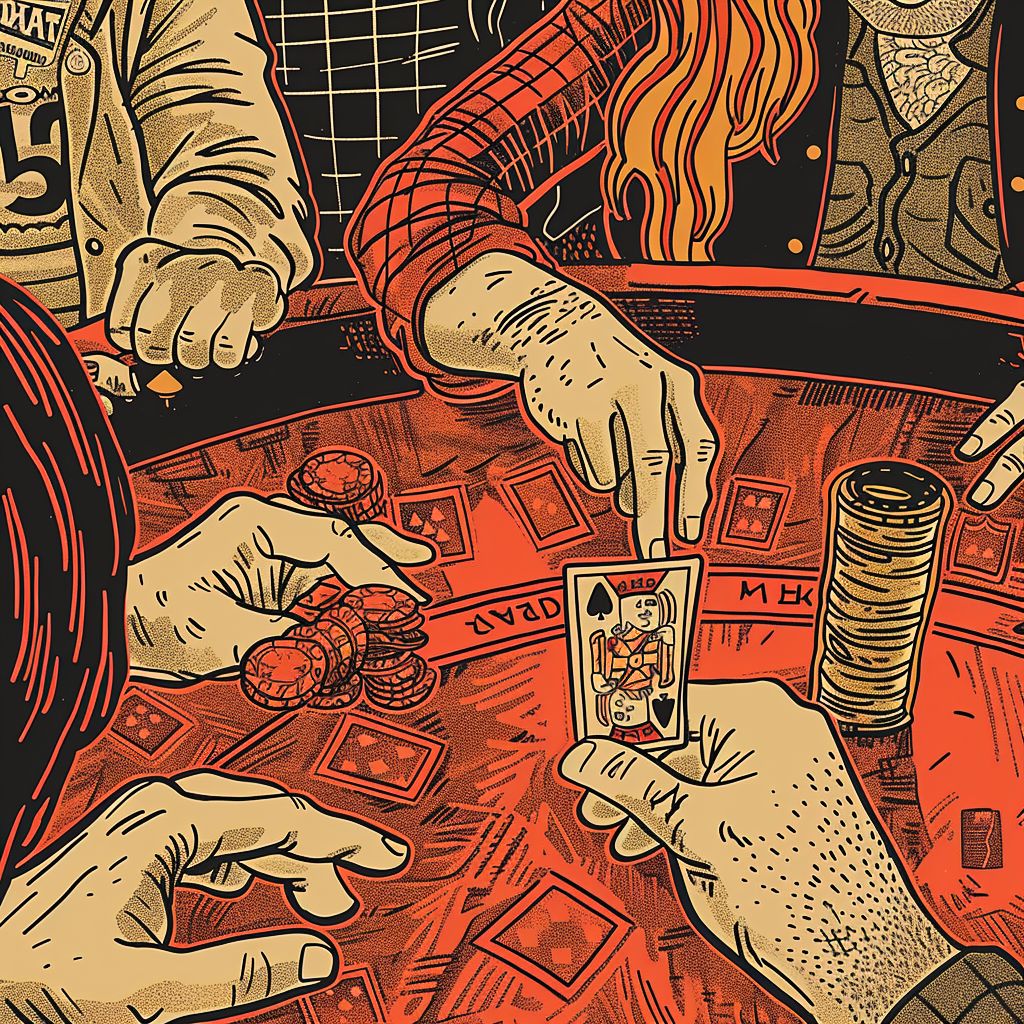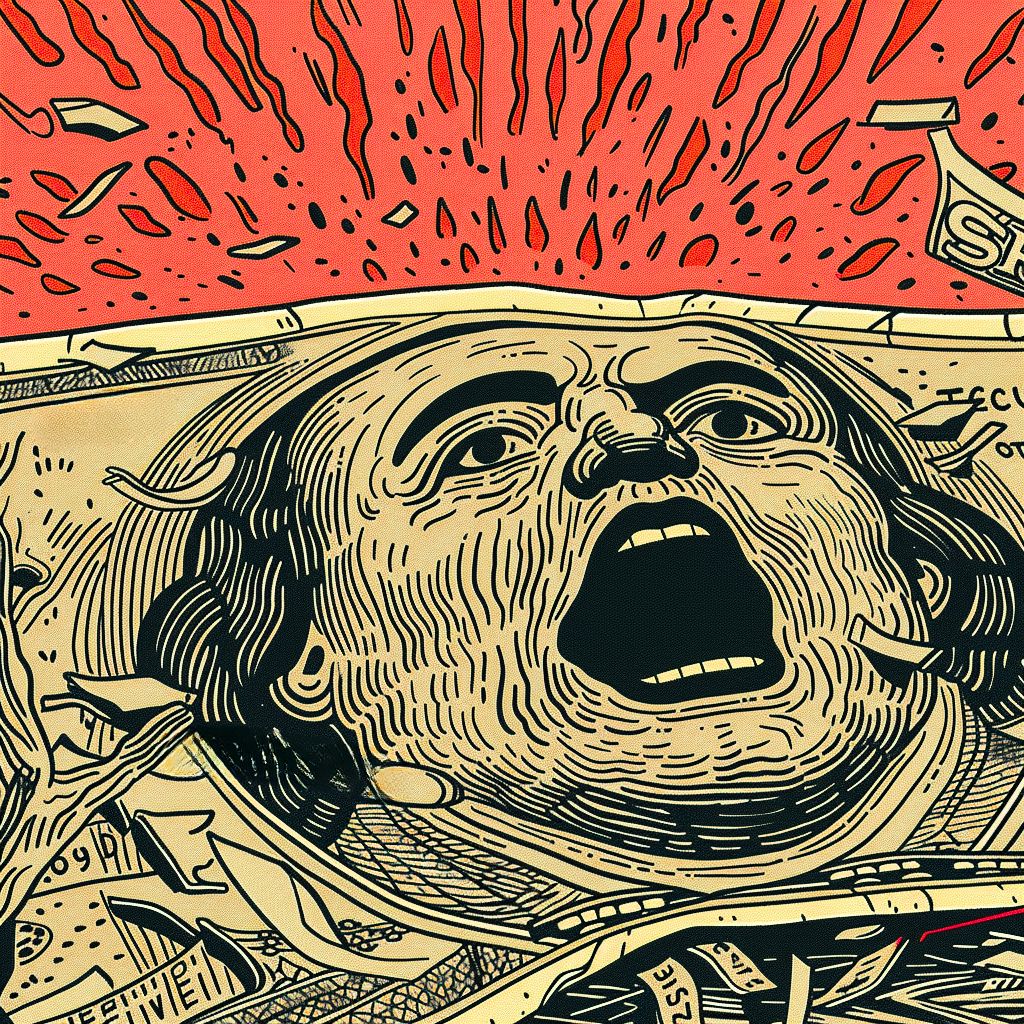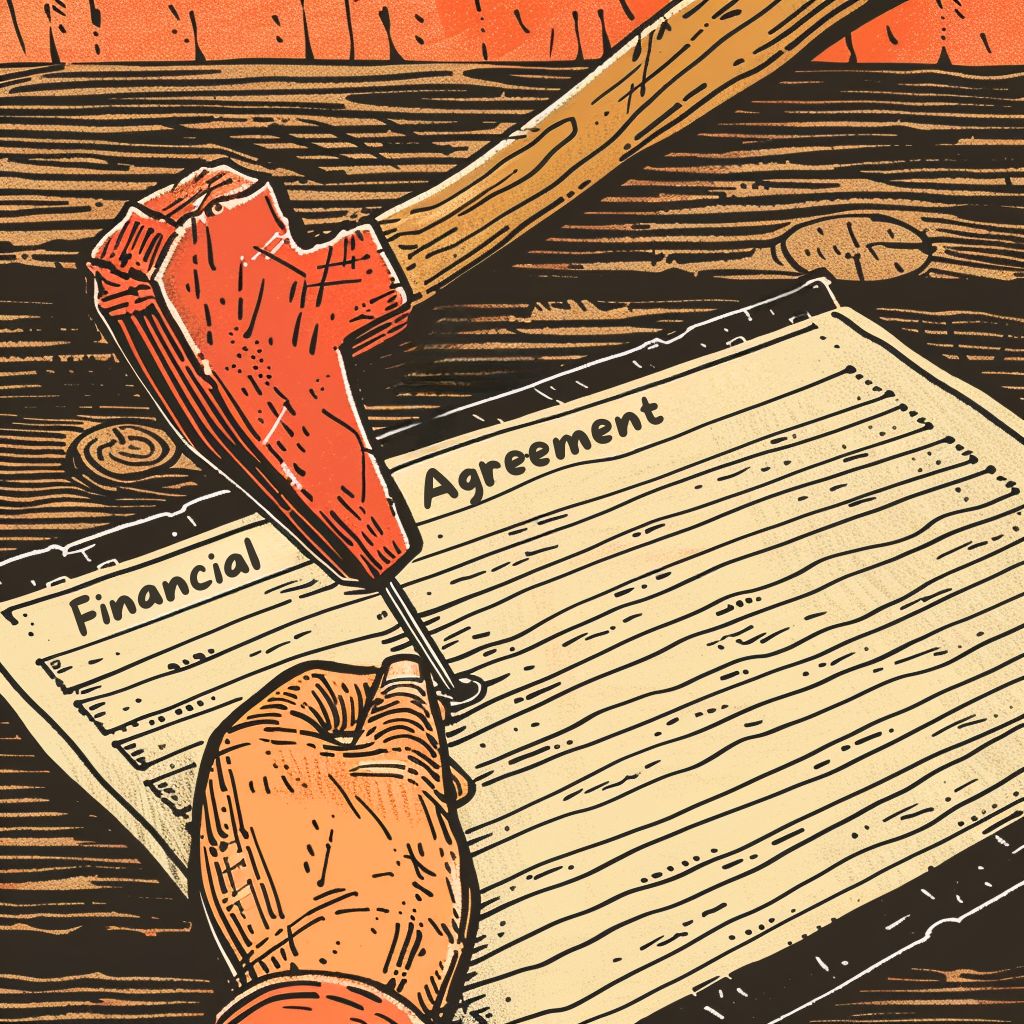Welcome to the whimsical world of finance, where the jargon isn’t just numbers and charts—it’s an adventure filled with “Angels,” “High Rollers,” and quests for “Silver Bullets.”
In this realm, fortunes are made under tables; often, only the “Rainmakers” can keep the “Credit Crunch” at bay.
Embark on a linguistic journey with us as we decode some of the most colorful idioms the finance world has to offer.
From the daring escapades of “Breaking the Bank” to the cautious tales of “Hedging Your Bets,” you’ll discover that the language of money is as rich and diverse as the markets themselves.
Buckle up; it’s time to dive into the treasure chest of financial wisdom, where every idiom is a story, and every term has its tale.
1. Under the table
Originating in the bustling marketplaces and inns of the 16th century, the phrase “under the table” speaks to the clandestine dealings and secretive exchanges of goods, money, or information that occurred away from the prying eyes of authority.
The term first found its way into the vernacular as merchants and patrons looked for discreet ways to conduct business that might skirt around the restrictive laws or taxes of the time.
This idiom paints a picture of secretive transactions, where agreements were made and hands were shaken under the literal tables of dimly lit taverns or market stalls, ensuring privacy and confidentiality.
Such dealings were often wrapped in a veil of secrecy, meant to evade oversight or circumvent the constraints imposed by rulers or guilds.
Today, “under the table” is used to describe transactions or agreements made in secret, often to avoid taxes or legal oversight.
It’s a nod to the lengths individuals will go to in order to bypass regulations, serving as a cautionary tale of the shadowy aspects of commerce and negotiation.
This phrase finds its place in both casual conversation and more formal discourse, reminding us of the age-old practice of seeking paths around the laws and norms of society.
Whether in tales of historical trade or in discussions of modern-day financial ethics, the term continues to evoke images of secrecy and discretion, highlighting the enduring nature of under-the-table dealings in human affairs.
Example 1: He got paid under the table for the repair work, so there were no taxes involved.
Example 2: They prefer hiring workers under the table to avoid the bureaucratic hassle of formal employment contracts.
2. Riding the Gravy Train
The expression “riding the gravy train” has its roots in the early 20th-century American lexicon, emerging during a period when railroads symbolized prosperity and movement.
The term “gravy” itself, slang for easy profits or unearned benefits, combined with the image of a train, conjures the idea of smoothly traveling to wealth without much effort.
This idiom was popularized as the United States experienced rapid industrial growth and financial speculation, leading to scenarios where individuals could make significant profits with minimal effort, often through investments or fortuitous circumstances.
The imagery evoked by “riding the gravy train” is one of effortless journeying towards wealth and comfort, akin to being on a luxurious train ride where all needs are met without any toil on the part of the passenger.
Such scenarios were particularly resonant during times of economic boom, where stories of instant wealth and easy living were common, capturing the public’s imagination and envy.
In contemporary usage, “riding the gravy train” often carries a slightly envious or critical tone, used to describe someone benefiting greatly from favorable conditions or connections without much personal merit or hard work.
It serves as a commentary on societal and economic inequalities, reflecting on how some individuals manage to find an easy path through the complexities of financial systems.
The phrase is utilized in both informal discussions and more pointed social critiques, acting as a reminder of the disparities in effort and reward within economic structures.
Whether in historical reflection or current analysis, “riding the gravy train” highlights the fascination and critique of unearned prosperity, pointing out the societal intrigue with wealth obtained through fortunate circumstances rather than hard labor.
Example 1: After marrying into a wealthy family, he was accused of riding the gravy train, with no need to work a day in his life.
Example 2: Many early investors in the tech start-up were simply riding the gravy train, reaping massive rewards from a minimal initial investment.
3. Cash is King
4. Follow the Money
The phrase “Follow the Money” gained prominence in the early 1970s, associated with the infamous Watergate scandal that led to President Nixon’s resignation.
Although not originally uttered during the investigation, it was popularized by the movie “All the President’s Men,” a portrayal of the journalistic investigation by Woodward and Bernstein.
The phrase encapsulates the method of tracking financial transactions to uncover corruption or illegal activities, especially in politics and high-level financial crimes.
This idiom suggests that money trails often lead to the heart of complex issues, revealing the motives and actions of individuals involved in dubious activities.
It’s based on the premise that financial transactions can provide concrete evidence of wrongdoing, making it a powerful tool in investigative journalism, law enforcement, and financial analysis.
“Follow the Money” has since been adopted in various contexts beyond political scandals, including corporate fraud investigations, money laundering, and financial audits.
It embodies the detective work of tracing money flow to uncover hidden agendas, fraud, or corruption.
The concept behind the phrase has led to the development of sophisticated financial tracking and analysis techniques. Governments, regulatory bodies, and investigative journalists now use advanced technology to monitor financial transactions and fight corruption, embezzlement, and other financial crimes.
In today’s discourse, “Follow the Money” serves as a reminder of the power of financial evidence in exposing the truth. It underscores the importance of transparency and accountability in financial dealings in government, business, or non-profit organizations.
The phrase is not only a tool for uncovering wrongdoing but also a call to action for ensuring financial integrity and ethical conduct in all areas of society.
Example 1: To understand the corruption scandal, investigators knew they had to follow the money, eventually leading them to a complex web of offshore accounts.
Example 2: In the documentary, the journalist decided to follow the money, revealing how donations intended for disaster relief were diverted to private accounts.
5. Break the Bank
The expression “break the bank” originated from Europe’s gambling halls and casinos in the 19th century.
It describes a scenario in which a player wins more money than the gaming table has available. The term paints a vivid picture of a gambler depleting the house’s reserves, causing a significant financial upset.
Historically, casinos and gambling venues operated with a literal ‘bank’ or cash reserve from which payouts were made. To “break the bank” meant that the house could not cover the bets—a situation of considerable excitement and, for the casino, potential distress.
The idiom is rooted when gambling establishments were smaller, and a single large win could jeopardize their financial stability.
Famous instances in Monte Carlo, where players like Charles Deville Wells famously “broke the bank,” have cemented the phrase in popular culture.
In modern usage, “break the bank” has transcended its gambling origins to denote any situation where expenses greatly exceed budgetary limitations, whether in personal finance, business expenditures, or government budgets. It emphasizes the impact of excessive costs, suggesting a level of spending that threatens financial solvency.
The phrase serves as a cautionary note against financial recklessness and highlights the consequences of exceeding fiscal limits. It is used both in literal discussions of financial planning and metaphorically to describe any situation where limits are surpassed to a damaging extent.
“Break the Bank” reminds us of the risks associated with overextending financially, whether in the context of a night at the casino or the broader realms of budgeting and financial management.
Example 1: Buying that luxury car would definitely break the bank for me—I’d have to dip into my savings just to make the down payment.
Example 2: The city’s ambitious infrastructure project threatened to break the bank, stretching municipal finances to their limits.
6. War Chest
The idiom “rolling in dough” is a vivid expression that conveys the image of someone having an abundance of money, to the point of luxury or excess.
Its origins can be traced back to the early 20th century, rooted in the slang of the time when “dough” emerged as a popular colloquial term for money.
The imagery of “rolling” in it suggests not just wealth but an overwhelming abundance, as if one could literally roll around in piles of cash.
This phrase reflects the period’s social and economic contexts, where rapid industrialization and the emergence of new wealth-creation opportunities led to significant disparities in wealth.
It captures the era’s optimism and the dream of achieving such affluence that money would no longer be a concern.
In modern usage, “rolling in dough” often carries a tone of envy or admiration, used to describe individuals or entities that are perceived as being extremely wealthy.
It can be employed in both a literal and figurative sense, sometimes used humorously to exaggerate someone’s financial success or to critique the ostentatious display of wealth.
The expression serves as a colorful way to discuss economic success and many people’s aspirations toward achieving financial security and prosperity. It embodies the quintessential dream of financial freedom and the luxuries that come with it, resonating with the desire for a life where money is plentiful, and financial worries are a thing of the past.
“Rolling in dough” continues to be a popular way to comment on wealth and financial success, illustrating both the allure of affluence and the societal fascination with those who have achieved it.
Example 1: After the company went public, its founders were suddenly rolling in dough, affording luxuries they had never dreamed of before.
Example 2: The movie star, known for her blockbuster films, was reportedly rolling in dough, with a lavish lifestyle that included mansions, exotic vacations, and a collection of vintage cars.
12. Hedge Your Bets
The phrase “hedge your bets” originates from gambling and finance, where it first appeared as a strategy to reduce risk by making several bets with opposing outcomes.
The idea is akin to placing a safety net under one’s investments or decisions, ensuring that if one venture fails, others might succeed, thereby minimizing potential losses.
The term “hedge” comes from the old English practice of enclosing a land with hedges to limit its boundaries, symbolizing the containment or reduction of risk.
This concept has been a part of financial strategies since at least the 17th century when the first formal stock markets began to develop.
Traders would “hedge” their stock purchases by also investing in commodities or other securities that were expected to perform differently under the same economic conditions, thereby protecting themselves against market volatility.
In contemporary usage, “hedge your bets” has broadened beyond financial and gambling applications to mean taking precautions to protect against loss, failure, or uncertainty in any aspect of life.
It reflects a cautious approach to decision-making, where individuals or organizations seek to diversify their risks to navigate uncertain futures more safely.
The idiom captures the essence of risk management, emphasizing the wisdom of not putting all one’s eggs in one basket. It advises on the prudence of having a Plan B (and sometimes C and D) as a buffer against the unpredictability of life, markets, and human endeavors.
“Hedge your bets” serves as a metaphor for cautious optimism and strategic planning, highlighting the balance between pursuing opportunities and safeguarding against potential setbacks.
Example 1: Knowing how volatile the tech industry can be, she decided to hedge her bets by investing in real estate and renewable energy alongside her tech startup.
Example 2: The agricultural company hedged its bets by diversifying its crops and investing in weather insurance, protecting itself against the possibility of a poor harvest due to drought or floods.
13. Money Talks
“Money talks” is an idiom that succinctly captures the concept that money gives one the power and influence to get things done or to have one’s opinions heard and respected.
The phrase suggests that financial wealth often translates into a form of social and political clout, enabling individuals or entities with substantial resources to sway decisions, shape outcomes, and navigate through bureaucratic or legal obstacles more easily than those without.
This expression likely took root in early capitalist societies, where wealth accumulation began to rival traditional aristocracy and birthright as a primary source of power and prestige.
It reflects the growing recognition of economic power as a key driver of social dynamics and decision-making processes.
“Money talks” underscores a universal truth acknowledged across cultures and eras: financial resources can open doors, create opportunities, and command attention in ways few other assets can. It points to the practical reality that, in many situations, financial incentives or pressures can be more persuasive than moral arguments or appeals to fairness.
In contemporary discourse, the phrase is often used to critique the perceived overemphasis on financial considerations over ethical ones, especially in politics, business, and media. However, it can also be invoked more neutrally or even positively, acknowledging the effectiveness of financial strategies in achieving goals or implementing changes.
The idiom serves as a commentary on the power dynamics in society, highlighting how wealth influences actions and decisions, both at an individual and systemic level.
Example 1: In the debate over the new city park, it seemed like money talks, as the developers’ generous donations to local officials swayed the decision in their favor, despite public opposition.
Example 2: She knew that in the art world, money talks, so she secured funding from wealthy patrons to launch her gallery, ensuring its success from the outset.
14. Rainmaker
The term “rainmaker” originates from Indigenous American practices and beliefs, referring to a person who possesses the mystical ability to bring rain to nourish crops and ensure a bountiful harvest.
This figure was seen as possessing crucial skills and knowledge to influence the weather and, by extension, the well-being and prosperity of the community.
In modern business and professional contexts, a “rainmaker” is someone who generates substantial revenue or secures valuable clients and deals for their firm or organization.
This person is often highly skilled in networking, persuasion, and understanding market dynamics, making them invaluable in competitive industries.
The transition from its original meaning to the contemporary one is rooted in the metaphorical power of “making rain” — that is, creating prosperity.
In both senses, the rainmaker is a catalyst for growth and success. In business, this often involves a combination of charisma, expertise in one’s field, and a deep understanding of client needs and industry trends.
Rainmakers are celebrated for their ability to secure lucrative opportunities and are often given wide latitude in how they operate within their organizations. Their success in bringing in new business or achieving difficult goals makes them key figures in their workplaces, much like their namesakes were in their communities.
This term underscores the value of individuals who not only excel in their personal achievements but also significantly contribute to the success and expansion of their larger communities or organizations. It highlights the impact that a single, talented individual can have on the prosperity of a group.
Example 1: Despite the economic downturn, he became a rainmaker for the law firm, securing several high-profile clients and turning the financial tide in their favor.
Example 2: As a rainmaker in the tech startup scene, she leveraged her extensive network to bring in vital venture capital funding, propelling her company into the forefront of innovation.
15. Silver Bullet

Hey fellow Linguaholics! It’s me, Marcel. I am the proud owner of linguaholic.com. Languages have always been my passion and I have studied Linguistics, Computational Linguistics and Sinology at the University of Zurich. It is my utmost pleasure to share with all of you guys what I know about languages and linguistics in general.

